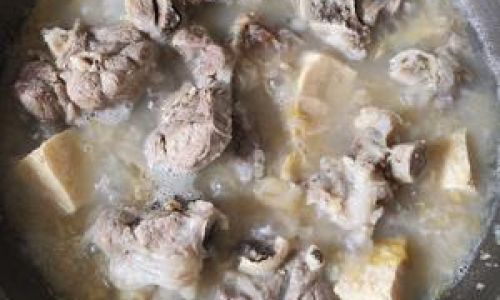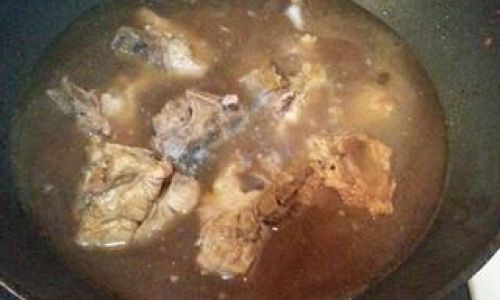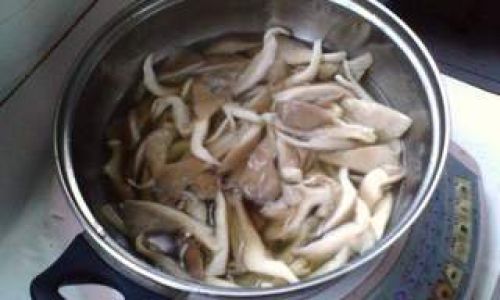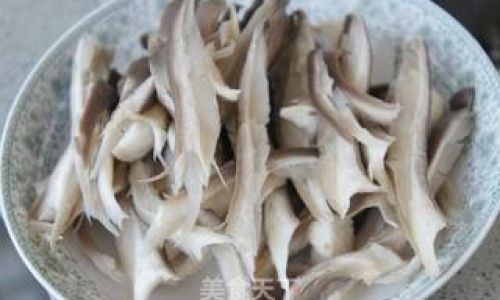Introduction

In the realm of comfort foods, few dishes evoke the warmth and nourishment of a hearty stew quite like a well-crafted pot of stewed bone broth. This timeless culinary staple is not only rich in flavor but also packed with nutrients derived from the slow cooking of bones, vegetables, and herbs. Whether you’re looking to soothe a sore throat, bolster your immune system, or simply enjoy a satisfying meal, learning how to make stewed bone broth is a skill worth mastering. This guide will take you through every step of the process, from sourcing the best ingredients to achieving that perfect, golden broth that’s both aromatic and deeply satisfying.
Section 1: Understanding the Basics
Before diving into the recipe, it’s crucial to understand the foundational principles behind making stewed bone broth. The process involves simmering bones, often from beef, pork, or chicken, for an extended period, usually several hours or even overnight. This allows for the extraction of collagen, gelatin, minerals, and amino acids from the bones and marrow, creating a broth that is both nutritious and flavorful.
1 Choosing the Right Bones
The quality of your bones will greatly influence the final outcome of your broth. Ideally, you should opt for knuckle bones, marrow bones, or a mix of meaty bones and joints. These types of bones contain more collagen and marrow, which are essential for a rich, gelatinous broth. Fresh, organic bones are preferable as they tend to be free from hormones and antibiotics.
2 The Importance of Roasting
Roasting the bones before simmering is a crucial step. It not only adds depth of flavor but also helps to caramelize the bones’ surfaces, which in turn enhances the broth’s color and taste. Preheat your oven to around 350°F (175°C) and roast the bones for about 30-45 minutes, turning them occasionally until they are evenly browned.
3 Selecting the Right Pot
The type of pot you use can make a significant difference. A heavy-bottomed, enamel-coated cast iron Dutch oven or a stainless steel stockpot are excellent choices. Avoid aluminum or reactive metals, as they can alter the taste of the broth. A large pot is essential to allow for evaporation and to ensure the bones are fully submerged in liquid.
Section 2: Gathering Ingredients
Now that you have the basics down, let’s move onto the ingredients. A good stewed bone broth recipe balances flavor, nutrition, and simplicity.
1 Bones and Water
Start with approximately 2-3 pounds (900g-1.4kg) of bones and cover them with cold, filtered water. The ratio of water to bones can be adjusted based on personal preference, but generally, enough water to fully submerge the bones with an inch or two of extra liquid is ideal.
2 Vegetables

Vegetables add both flavor and nutrients to your broth. Classic choices include:
- Carrots: For sweetness and color.
- Celery: To provide a fresh, aromatic base.
- Onions: Both white and yellow onions can be used for their savory depth.
- Garlic: A few cloves, crushed or sliced, for a subtle hint of pungency.
3 Aromatics and Herbs
These ingredients will elevate your broth from good to great:
- Bay Leaves: For a subtle, earthy flavor.
- Fresh Thyme or Rosemary: Both add a hint of herbal freshness.
- Black Peppercorns: A few whole peppercorns can be added for a touch of spice.
- Parsley Stems: These can be included for additional aroma and color.
4 Optional Additions
Feel free to experiment with additional ingredients such as:
- Apple Cider Vinegar: A tablespoon or two can help draw out more nutrients from the bones.
- Tomato Paste: For a richer, more complex flavor profile.
- Mushrooms: Such as shiitake or cremini, for an earthy umami taste.
Section 3: The Cooking Process
With all your ingredients prepared, it’s time to start cooking.
1 Preparing the Pot
Place the roasted bones in the bottom of your pot. Add the chopped vegetables, aromatics, and herbs around the bones. Pour in the cold water, ensuring everything is submerged. If using apple cider vinegar, add it now.
2 Bringing to a Simmer
Place the pot on the stove over medium-high heat. Bring the contents to a gentle simmer, skimming off any foam or impurities that rise to the surface. This step, known as “scumming,” is important for a clear, clean broth.
3 Simmering
Reduce the heat to low and let the broth simmer gently. The key to a great broth is patience; the longer it simmers, the more flavor and nutrients will be extracted. Aim for at least 4-6 hours, but overnight is even better. Keep the lid slightly ajar to allow some evaporation, which will concentrate the flavors.
4 Checking and Adjusting

Periodically check the broth, skimming off any additional foam as needed. If the liquid level drops too low, you can add more boiling water, but avoid adding too much as it can dilute the flavor.
Section 4: Finishing Touches
Once your broth has reached the desired cooking time, it’s time to finish it off.
1 Straining
Carefully ladle the broth through a fine-mesh strainer into a clean pot or containers. Discard the bones and vegetables, but feel free to compost them or use them for other purposes like making dog treats.
2 Cooling and Storing
Allow the broth to cool to room temperature before refrigerating or freezing. As it cools, the fat will solidify on top, making it easy to remove for a lighter broth. Store in airtight containers in the refrigerator for up to a week or in the freezer for several months.
3 Serving Suggestions
Stewed bone broth is incredibly versatile. Enjoy it as a soothing soup on its own, use it as a base for other dishes like risotto or stew, or incorporate it into your daily diet as a nutritious beverage.
Section 5: Troubleshooting and Tips
Even the most seasoned chefs encounter issues when making broth. Here are some common pitfalls and solutions:
- Cloudy Broth: Ensure you skim off all foam and impurities during the simmering process.
- Weak Flavor: Increase the cooking time or use more bones and aromatic vegetables.
- Excessive Fat: Refrigerate the broth and skim off the solidified fat before using.
- Strong Bone Odor: This is normal during cooking but should dissipate once the broth is strained and cooled.
Conclusion
Making stewed bone broth is a labor of love that rewards you with a nourishing, flavorful staple for your kitchen. By following the steps outlined in this guide, you’ll be able to create a broth that’s not only delicious but also packed with nutrients. Whether you’re looking to improve your health, indulge in a hearty meal, or simply enjoy the art of slow cooking, stewed bone broth is a skill worth perfecting. Happy stewing!






0 comments